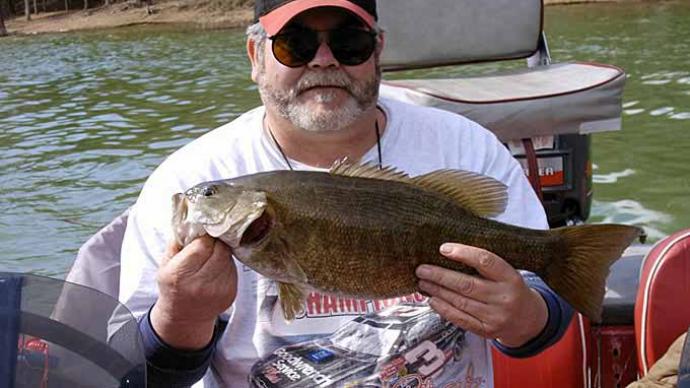
The next time you encounter hard-to-catch bass in clear, shallow water, throw a floating worm at them. You may discover that it’s the best way to catch fish under those conditions.
A floating worm is exactly that – a soft-plastic bait that floats seductively on or just beneath the surface. You can fish it in a do-nothing style and allow it to sink slowly, twitch it over the top and make its tail dance and dart, or add a tiny weight to the body and make it dart and sink.
The floating worm was once a well-guarded secret of the pros in the late 1970s. I learned about it the hard way and have never forgotten how deadly it can be under the right conditions. I fished an area on the St. John’s River in Florida with every lure in my tackle box without getting a bite, only to have tournament competitor Shorty Evans come into the same area and catch a ton of fish on a purple worm that had white polka dots.
After that I began experimenting with other lures and soon discovered that a floating Fliptail Lizard fished without weight was a deadly technique for catching wary bass suspended in shallow bushes.
Since then, the technique has evolved to include a variety of soft-plastic baits. The introduction of the Slug-Go triggered manufacturers to develop a wider variety of lures that we now refer to as “soft stick-baits,” because they’re fished similarly to how we fish traditional surface baits.
For example, when rigged flat and straight on the hook, you can make a floating worm walk the dog like a Zara Spook or cause it to glide. Or, if you rig it with a little bend on the hook, you can make the lure dive like a Rapala.
As good as these floating worm/soft stickbaits are at attracting bass, they have a major drawback in that it’s not easy to hook a bass after it strikes. When I first began fishing them, I was lucky to boat 50 percent of the fish that struck. Once I make adjustments in my tackle, my success increased.
There are a couple of reasons why we miss or lose fish that hit floating worms. First of all, they often strike on a slack line, so we lose some of the power on the hookset. When I realized it was important to use a stiffer rod, I began fishing these worms on a long, stout flipping rod and my catch ratio climbed to 70 percent.
However, the biggest improvement came when I switched from monofilament line to braided line, such as Berkley’s FireLine. Because the FireLine has no stretch, the hook point makes instant contact with the fish the moment I set the hook.
Hooks are equally important. Some anglers recommend small, light hooks to make the worm float better, but not me. I want a big hook, say a No. 4/0 or 5/0 Mustad Needle Point Hook with a big bite. If my bigger hook causes the worm to sink too fast, I’ll switch to a bigger, more buoyant worm before I change my hook.
Of course, line size will add buoyancy, too. I use 20-pound FireLine, which has smaller diameter than 20-pound monofilament, but I coat 3 to 4 feet of the line in front of the worm with fly line dressing. That helps to float the bait better.
If you fish a lot of clear lakes and the bass aren’t cooperating, a swimming worm and the proper tackle could change your luck. If you’ve never tried it, you’re missing out on an exciting way to catch bass.
You can find more articles, quick tips and much more at HankParker.com.




